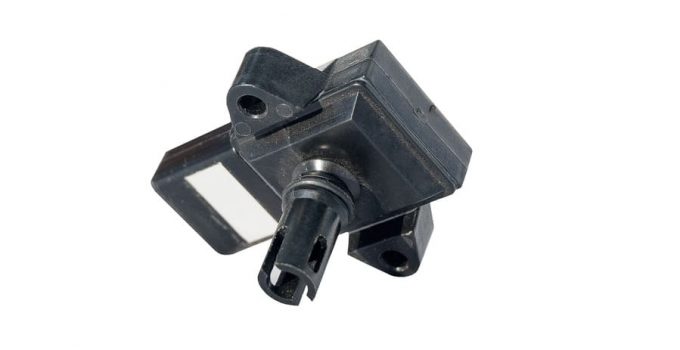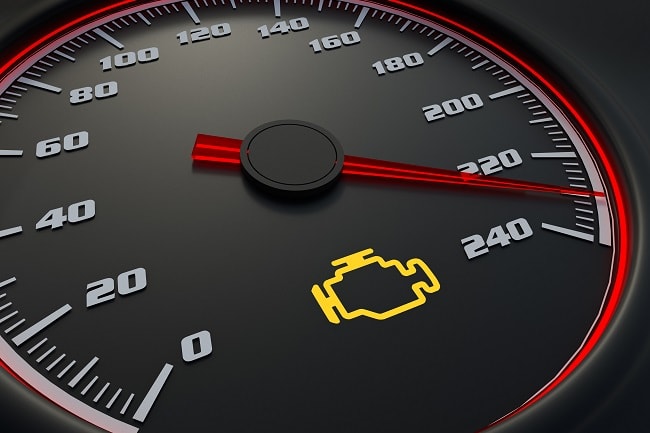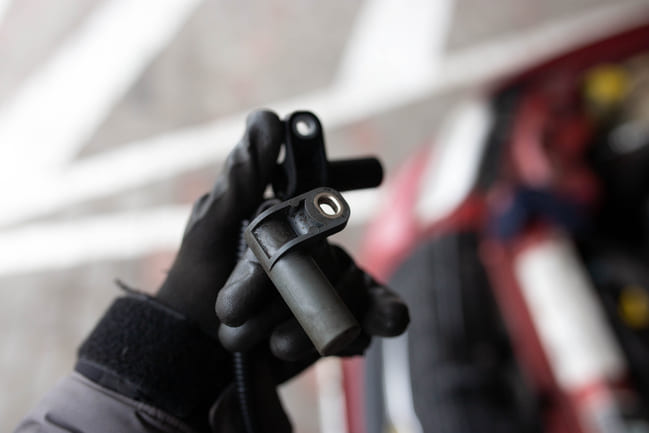
The speed sensor determines the position and speed of rotation of the crankshaft. In very modern vehicles, these measured values are also used to visualize the engine speed. However, the data is much more important for the engine control unit, which can be found in all vehicles these days. This can evaluate the measured values and use them to optimize the engine, the ignition and the injection. In the following article we will explain the different types of sensors and how you can recognize that this component is defective.
Contents
What types of speed sensors are there?
A basic distinction is made between so-called Hall sensors and inductive speed sensors. An inductive sensor takes advantage of the fact that a current flows through a coil when the surrounding magnetic field changes. To do this, a gear wheel is attached to the crankshaft's axis of rotation. The sensor itself consists of a permanent magnet and a soft iron core coil. During the revolution, the gear wheel now moves in the magnetic field of the permanent magnet and changes it (depending on whether there is a gap or a tooth in the vicinity of the sensor. In this way, not only can the individual revolution be measured, but the engine control unit can also receive information about the angle of rotation and the exact rotational speed. You need a suitable oscilloscope to check such a crankshaft sensor.
A Hall sensor works according to a different functional principle. A permanent magnet is also used here. However, this is arranged in such a way that it forms a perpendicular magnetic field to the Hall sensor. The latter is located between the permanent magnet and a gear that rotates with the crankshaft. Here, too, the rotary movement has a significant influence on the magnetic field. Current flows through the semiconductor of the sensor. If a gear tooth passes the magnetic field, the electrons are deflected and a square-wave voltage in the millivolt range occurs. This can then be evaluated by the engine control unit.
Symptoms if there is a defect in the crankshaft sensor

Since this is a very important component, you should act as quickly as possible in the event of a defect. However, you can only do this if you know exactly what symptoms can occur. One of the most important problems caused by a defective sensor of this type is, for example, an engine that starts very poorly or not at all. In addition, in most cases, corresponding error codes are stored in the associated error memory of your vehicle. In this case, the check engine light in the instrument panel also lights up permanently. In such a case, visit a specialist workshop to read out the errors. Alternatively, you can get yourself a device to read out the error codes via the OBD(2) interface. Corresponding error messages can, for example, „Speed sensor defective“ or „Crankshaft sensor signal not plausible“ ring. In addition, it can also happen that your vehicle engine simply dies out or switches to what is known as emergency mode. Some vehicle owners also report that a defective crankshaft sensor can also cause brief engine failures.
The location of the speed sensor and its replacement

In order to change the crankshaft sensor yourself, you first need to find out its location. You will find information on where the crankshaft sensor is located in good repair manuals for your specific vehicle model. Since this component measures the movements or revolutions of the engine crankshaft, it must of course be nearby. For most vehicle models, you will therefore have to look for it in the lower part of the engine. You should be careful not to confuse this component with the camshaft sensor, because this is often very close by. Depending on the exact position of the component to be replaced and its attachment, such a change can be complex. Various additional units may have to be dismantled in order to gain sufficient access. If you do not have the necessary experience or equipment, we strongly advise against replacing the defective crankshaft sensor yourself. In this case, the specialist workshop you trust is your competent contact. In terms of labor costs, you have to reckon with around 50 to 250 €, with the spare parts costs around 30 to 80 €.
Causes for a defect in the crankshaft sensor
A failure of this component is usually due to normal wear and tear. Due to the installation on the engine, this component is exposed to a lot of vibrations, but also to thermal loads. This can easily lead to short circuits in the component or its connections, the permanent magnet breaking through or damage to the shrink wheel. However, contamination can also lead to a defect in the speed sensor. Finally, this component transmits electronic signals to the engine control unit. This transmission can be disrupted if, for example, the contacts oxidize (possibly due to the ingress of water) or the cables are worn through or bitten through (martens). Since removing the component can be complex, it is often worth replacing the camshaft sensor as well, because it has a comparable service life and is often located in an adjacent position.
Conclusion
A faulty crankshaft position sensor is a comparatively minor problem, but it can cause a number of other problems. The material costs for a repair are about 30 to 80 €, whereby the amount of work, depending on the sensor position, can make a significant difference. Compared to possible consequential damage, however, the costs are low, so you should always replace this component immediately; also because the engine can often no longer be started properly with a defective speed sensor.
A tip from CarTipsandmore:
- A defective speed sensor is only one possible cause of an unsuccessful engine start. For example, you should measure the charge level of the car battery, rule out a defective starter, check other sensors (e.g. the coolant sensor) and check the fuel pump. In addition, the fuel filter could also be clogged or even frozen. A marten may have bitten through an important cable or line. If none of this, apart from the crankshaft sensor, was the cause, you should extend the troubleshooting to other important systems. These include, for example, the spark plugs (gasoline), glow plugs (diesel), the engine and preheating control units, the fuel lines, the ignition lock and the ignition coils (gasoline).
- Your crankshaft sensor may also be very dirty. This can be visually checked after removal. If there is no obvious mechanical damage, cleaning can also be attempted. You can use an oscilloscope or a suitable diagnostic tester to quickly check whether this remedy works. If the cleaning was unsuccessful, the only solution is to exchange it for a new spare part.
